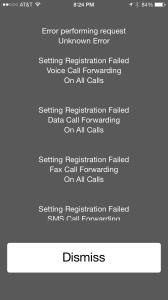Home Automation for the Rest of Us
Home Automation isn’t just for techies anymore. It is helping people with disabilities, parents of young children, and others who could benefit from a helping hand. Home Automation technology has been around for a long time, but obscure protocols, difficult setups, and high cost have generally relegated it to only the most geeky (or rich) among us. The good news is that The New World of Technology is ushering in a new age of Home Automation products and services that everyday people will finally be able to take advantage of. The year 2015 could be the year that Home Automation finally breaks out into the mainstream.
One of my daughters is part of a “Botball” club at her school where they design robots for competition. They are learning the basics of how to program the robots to do certain things based on the input the robots receive from various sensors. When it comes down to it, the robots are only as good as the input they receive from their sensors and the actions they are programmed to perform based on that input. Home Automation is very similar in this regard. Good automated homes have various sensors that feed information into some type of system. This system is programmed to perform certain functions based on that input. For example, when the house senses that someone has entered a room, the lights turn on. Another example is that when there has been no activity in the house, the thermostat automatically adjusts the temperature setting to save energy.
All of this might sound fairly simple, but until the last few years technology had not advanced to a point where devices with good sensors were reasonably priced. Additionally, there were few standards on how devices could interact with each other and most products were geared toward techies. So while Bill Gates could understand how to create (and afford) a highly automated home, most people could not. Even those of us who could do some automation around our house were limited to what we could do unless we were willing to pay through the nose. The key factor to making Home Automation accessible to mainstream users is the availability of inexpensive and easy-to-use sensory devices. I have been watching the evolution of this industry for over 15 years now and I can say with confidence that this year should see a burgeoning market of these devices. Additionally, technology from companies like Apple are set to make the integration of these devices much simpler.
If you have even the slightest interest in automating your house, here are some of the ways you could do so.
- Saving energy. A lot of home automation technologies are designed to intelligently use energy only when you need it, and turn things off when you don’t. Light and thermostats are a couple of the most common applications.
- Remote Control. Being able to control things in your home from a remote location can provide peace of mind when you are away. One example is your house telling you that the garage door was left open so you can then shut it using your smartphone.
- Security. Automated security systems can provide increased security over traditional security system. They may also be able to save you money on monitoring.
- Monitoring loved ones. The ability to see loved ones while away can allow people more freedom in leaving their homes. New health-based automation technologies can also notify caretakers and doctors that emergency situationa may be imminent.
- Sheer convenience. Don’t dismiss the convenience factor! Our homes are our castles and if we want to be able to push a button to automatically adjust things in our home then should be able to do that!
Bottom line is to start investigating your options now because I believe Home Automation technology is about to get very popular this year. If you want to be able to take advantage of it, knowledge is power. If you have questions about Home Automation technologies, or need some help implementing a solution, please feel free to contact me.
It’s Upgrade Season!

With the prevalence of mobile devices taking over as the preferred computing devices for many people, a lot of consumers simply aren’t buying new laptops and desktops as often. For what a lot of users do with their older computers, they would like to keep them running a while longer. But as personal computers age, they tend to run slower. Fortunately, there are a couple of simple upgrades that can significantly revive older computers and in many cases make them feel almost like new computers.
The first upgrade is RAM, otherwise known as “memory”, but not to be confused with storage space (i.e. hard drive space). A lot of people use the term “memory” to describe storage space on their computers but when talking with computer technicians, the term “memory” almost always refers to RAM. RAM can best be described as the working space of a computer. Too little RAM and the computer simply can’t work efficiently. When many computers were purchased several years ago, the amount of RAM they had was sufficient to run the software and operating systems of the time. But as the years have passed by, upgrades to operating systems and software generally require more RAM. If the computer still has the original about of RAM it was purchased with, it will generally run a lot slower than it used to. The good news is that RAM generally is a very simple and economical upgrade and can significantly improve the overall performance of an older computer.
The next upgrade is the computer’s storage, which has traditionally been hard drive technology. Hard drives are a mechanical technology, with magnetized platters inside them spinning at thousands of revolutions per minute. As with anything mechanical, they will eventually fail over time. In my experience, hard drives start to fail at an increasing rate in the 3-5 year timeframe. But even if they continue to work, what I’ve observed is that older hard drives start to slow down with age. Sometimes this slowdown is a sign that the drive is starting to fail and it should be replaced. Other times it simply seems to be a function of age. As with RAM, replacing a hard drive is an economical upgrade and can revive the speed of older computers. However, while replacing the hard drive with another hard drive might restore the speed of a computer, there is a way to actually boost the performance of an old computer beyond what it was when it originally shipped.
In the technology industry at large, hard drive technology is gradually being supplanted by Solid State Drive technology (SSD). The main advantage of SSD is that by eliminating the mechanical aspects of a hard drive and using only solid state circuitry, the drive can transfer data significantly faster than a hard drive. Solid state drives are also more reliable and use less power. In many computers, particularly laptops that generally used slower hard drives in order to maximize battery life, the replacement of a hard drive with a solid state drive can make them perform like newer computers. The main problem with solid state drives was that they were significantly more expensive than traditional hard drives. However, last summer the prices of solid state drives dropped by about half, making them much more affordable. Since that time I’ve been replacing a lot more hard drives with solid state drives and making a lot of clients very happy.
The bottom line is that with two relatively inexpensive upgrades, older computers can be made to feel like new again and even rival the perceived performance of brand new computers. If your computer is still in good physical shape and you would like continue to use it, these upgrades can “supercharge” it and extend its life for at least a few more years. I’ve found that laptops generally get the biggest benefit from these upgrades, especially Windows 7 laptops and MacBooks from the 2009-2010 and newer timeframe. Many iMac owners from that same timeframe are also seeing big improvements with these upgrades. But any computer from that timeframe (or even a couple of years earlier) can see big improvements from these upgrades so don’t hesitate to contact me if you’d like to keep your computer humming.
“Your Apple Device Has Malfunctioned Due to a Virus” – Phishing Scam
I just had a client send me a screenshot of a “warning” they received while browsing the Internet on their Macintosh computer. It is another phishing scam reminiscent of the FBI “Ransomware” phishing scam that I wrote about last year. To quickly sum up, on a Macintosh computer, this is NOT a virus or a malware. It is simply a trick to try to get you to call the number on the screen so that you can be fooled into buying whatever it is this fake tech support is selling you. The resolution is the same as the FBI phishing scam:
- Click on the Apple Menu in the upper left-corner of your screen and choose “Force Quit” from the menu. The Force Quit window opens.
- Make sure Safari is highlighted and click the Force Quit button. This should shut down Safari. Close the Force Quit window.
- Hold down a Shift key on your keyboard as you relaunch the Safari browser (usually by clicking the Safari icon on the dock)
Holding down the Shift key while launching Safari forces the browser to not reload any previously open web sites, bypassing the fake warning page. For more details about this type of phishing scam targeting Apple Macintosh users, read my previous article, FBI “Ransomware” Phishing Scam Affects Mac Users – How To Bypass.
FYI, Apple’s real tech support phone number is 800-275-2273.
Holiday Tech Toys 2014

Automatic
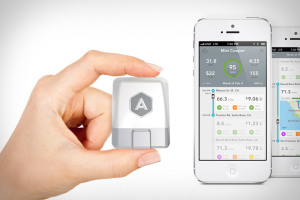
Fitbit Force/Charge
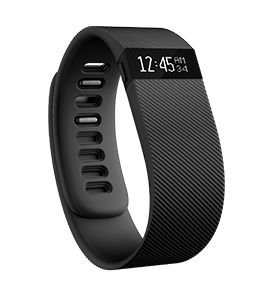
The reality is that the upcoming Apple Watch is going to completely change the landscape of the fitness technology market. The Apple Watch will have the heart rate monitor that I had wished for and now it seems that in response, Fitbit will be releasing new models that include a heart rate monitor for only about $20 more than what I paid for the Force. That being said, in a market that is about to be dominated by the Apple Watch, the Fitbit could still find fans among people who want a heart rate monitor but at a lower price point than the Apple Watch. If you have someone on your gift list that is a walker or runner, a current Fitbit model might be a great gift. Otherwise, wait for the new models next year.
Apple iPhone 6
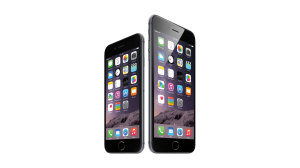
 Multiport USB Chargers
Multiport USB Chargers
The more mobile devices families acquire, the greater the need for a “charging station” to recharge all those devices. The problem is that it is difficult to plug in a bunch of chargers into one standard outlet. Sure, power strips can be used, but they are big and bulky. The best solution I’ve found is a multi-port USB charger. As my household has need of several different charging stations, I have purchased devices from both Anker & Photive (specifically the Anker 5-port 40W, the Anker 5-port 25W, and the Photive 6-port 50W). So far, the chargers have been working great with a variety of devices, such as iPhones, iPads, iPods, plus many other gadgets that my family owns, including several that are on this Holiday Tech Toy list. They even charge our Playstation 3 controllers, which are notoriously hard to find third-party chargers for. The key when shopping for chargers like these are to look for devices that use “intelligent” charging technology. This will allow one charger to charge a variety of different devices from different manufacturers, since many manufacturers use different charging specifications. If you know gadget-people who need help charging all those devices, a multi-port USB charger could be just the gift they are wishing for.
Chamberlain Smartphone Ready Garage Door Opener with MyQ Technology

SimpliSafe

Plantronics Voyager Legend
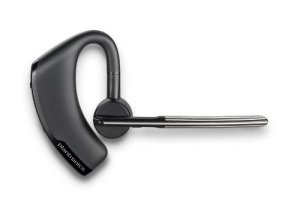
Smartbean Bluetooth Wireless Receiver
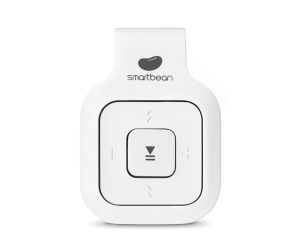
Limefuel Blast
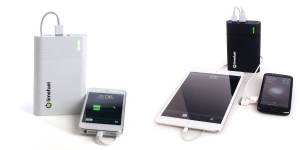
Crucial M100 Solid State Drives
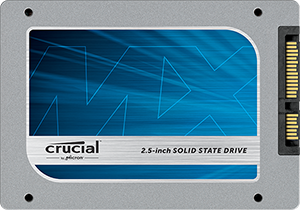
The Single Most Important Technology Shift You Can Make in 2015

Great Scott! It’s almost 2015! It’s time to shed risky old technology and you won’t even need 1.21 gigawatts!
As we approach the end of the year, many of us go into evaluation mode. We look back at the year and figure out what we did well and what could use improving. As a technology professional, I encourage everyone to consider what they can do to improve their technology situation going into a new year. The speed that technology changes necessitates that smart business owners (and individuals as well) review what new technologies are available and what older technologies are becoming obsolete. As we begin the transition into 2015, we should pay careful consideration to one particular technology change that could significantly impact us going forward.
To understand why this shift is so important, we simply need to review the last two years of technology news. In the area where I live, in early 2013 Schnucks supermarkets was the first major example of security breach resulting in the compromise of millions of credit card numbers. Late last year Target was the next big victim. This year Home Depot was the first big name, followed recently by Kmart. Along the way, other well-known companies such as Nieman Marcus, Dairy Queen, Michaels, and PF Chang’s were also hit. From my research, thousands of other smaller companies may have also suffered credit card compromises. Major examples also can be cited in other countries around the world. Why have so many businesses been hit in the last couple of years? Is there a common thread? In fact, there is.
The method of attack in every single one of the well-publicized data breaches was a malware infection. But deeper than that, the common vulnerability was the operating system used by all of these companies for their point-of-sale terminals. Yes, the Achilles heel for every single example was Microsoft Windows. When it comes to malware, there is no more fertile breeding ground in existence than Microsoft Windows.
Besides the highly publicized credit card data breaches, another disturbing trend in the last two years was the rise in Ransomware. Malware authors devised methods to encrypt victim’s data so that they could not retrieve it without paying a significant ransom. The best known example of this was the Cryptolocker malware. This type of attack affects not only businesses, but individuals as well. Once again, the only operating system that is vulnerable to this type of malware infection is Microsoft Windows.
Perhaps it is obvious by now that my recommendation for the most important technology shift you can make in 2015 is to eliminate Microsoft Windows from your technology usage. But I can already hear the panicked screams coming my way. We’ve been with Windows for so long, how could we ever get away from it? Am I crazy? However, before you go off the deep end, allow me to enlighten you.
First, realize we are entering the year 2015 – not 1995 or even 2005. Where 10-20 years ago switching away from Microsoft Windows was virtually unfeasible for many, the mobile device revolution has broken the stranglehold that Windows held over the technology industry for so many years. In The New World of Technology, many individuals and businesses have already significantly shifted their main technology platforms away from Microsoft Windows to other options such as Apple’s iPad and Macintosh. So I’m not talking about some pie-in-the-sky fantasy. Where moving away from Microsoft Windows may have been unrealistic for many in years past, it is much more reasonable to achieve and in fact has become almost commonplace in today’s technology environment. Only advice based on woefully outdated technology models would suggest that moving away from Microsoft Windows is not feasible.
There are still a lot of companies and people out there who have not shifted away from Microsoft Windows for a variety of reasons. One of those perceived reasons has been cost. True, any major change in technology involves cost, but the question now is can you afford NOT to switch away from Microsoft Windows? Ask Schnucks, Target, Home Depot, or any of the other companies affected just how many hundreds of millions of dollars using Microsoft Windows has cost them. Or ask anybody who had to pay hundreds of dollars in ransom to criminal organizations to get their data back, on top of the cost to clean their PCs from Cryptolocker.
I can hear the grumbling from other technology experts who claim that no platform is truly immune to malware. From a theoretical perspective, I agree. There is in fact no 100% safe technology system. However in the real world, we can look at example after example of just how bad it is for users of Microsoft Windows compared to users of any other operating system. Other operating systems, while they may have their security issues here and there, are no where near as vulnerable to malware as Microsoft Windows has proven itself to be. To say that the amount of malware that exists for Microsoft Windows dwarfs the number for all other operating systems combined is just scratching the surface. Doesn’t it make sense to move away from a platform that is known to be a haven for criminal malware to another platform that has nowhere near the vulnerabilities?
Usually the other argument made against moving from Microsoft Windows is that other operating systems are simply not popular enough to have yet gained the attention of criminals and therefore are going to be just as vulnerable in the future. I’ve debunked this argument so many times it grows tiresome and to fully explain it would require another article in itself. But let me sum it up for everyone here: Due to the superior core security designs of most other operating systems, malware simply can’t be created in the same way that it is for Microsoft Windows. Most other operating systems (or at least their basic cores) have been in existence for at least 15 or more years and malware authors have had ample time to attack them if no other reason than to prove they could. Aside from some minor examples that could cause very little damage, most other operating systems are virtually malware-free. Arguing that other systems are just as vulnerable as Windows shows a lack of understanding of the underlying technology and the situation at large. Along with Microsoft Windows, it is time to retire this argument in 2015 as well.
Let’s think about the situation from another perspective. If many large corporations with massive technology budgets and highly sophisticated security infrastructures couldn’t keep out malware that compromised their point-of-sale systems, what chance realistically do most of us have in keeping our Microsoft Windows systems free of malware? Reading any common advice for keeping your Microsoft Windows system secure almost always involves using your PC with a paranoid mindset. Literally, there is much advice out there that suggests limiting the use of your Microsoft Windows PC in order to keep it and your data secure. What is the point of using a computer where one must be constantly vigilant for attack and resign oneself to limited use for their own protection? Especially considering there are other platforms readily available where no such paranoia is necessary.
The reality is that moving away from Microsoft Windows is entirely possible and often very cost-effective with today’s technology. However, don’t misunderstand what I’m saying. I’m not advocating that everyone quit using Microsoft Windows “cold turkey”. There are many businesses that still need to retain the use of legacy software that only runs on Microsoft Windows for the time being. However, even for those who seem to be stuck in an uncomfortable marriage with Microsoft Windows, there are many options available to mitigate and isolate the risk from the highly vulnerable operating system. Don’t let outdated information and old-school ways of thinking stop you from pursuing a path away from Microsoft Windows. Your valuable data and a lot of time and money are at risk.
While some of us may truly be in positions where we will be stuck with Microsoft Windows for a while longer, the worst thing we can do is to pretend the problem doesn’t exist. Ignoring the issue only works as long as you are not a victim of the next major malware attack. It is now time to take the necessary steps to reduce your exposure to malware, which means reducing your dependence on Microsoft’s malware magnet of an operating system. Even if you can’t completely eliminate your use of Microsoft Windows at this time, anything you can do to reduce your usage now now while planning for your eventual exodus will be in your best interest.
I predict that sometime in the future, people will look back at the PC era and be perplexed as to why we put up so long with an operating system that was this incredibly vulnerable to malicious software. I hope that future comes sooner than later and you can help make that a reality starting in 2015. But certainly this task is not something that you should pursue alone. There are many things to consider in such a migration and it is easy to let something slip through the cracks if you are not a technology professional. Please consult with a trustworthy technology professional who is well-versed not only in Microsoft Windows, but also the range of other technology options available in this post-PC era. I’m certainly happy to answer your questions and help you develop your own plan to migrate away from Microsoft Windows, as I have done with many clients over the last several years. Feel free to contact me today if you have any questions or concerns.
High Speed Internet: Can Your Router Keep Up Anymore?
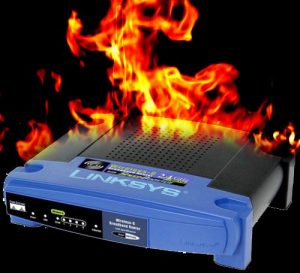
There are two main bottlenecks to be aware of. As most residential and small business routers include wireless networking, that is the first bottleneck I’ll talk about. Many wireless routers still in operation only support a maximum wireless bandwidth of 54 Mbps. That bandwidth decreases as you get further away from the router, so it should be obvious that routers like these will severely hamper wireless users from utilizing their full bandwidth if they are Charter subscribers.
It would seem the simple answer would be to buy a newer wireless router that supports higher bandwidths. While that answer is true, this brings up the second bottleneck. Many routers being sold today only support 100 Mbps on their wired Ethernet ports. Since wireless routers must connect to a cable modem through a wired port, the throughput of the wired port can become another bottleneck. For residential users, 100 Mbps wired Ethernet ports were more than adequate in the beginning of the year when speeds topped out at 30 Mbps or even later in the year at 60 Mbps. Even most business users were probably well-served by a router with 100 Mbps Ethernet. But now with 100 Mbps becoming the baseline for Internet speed, it isn’t enough to buy a router that only has 100 Mbps wired Ethernet ports. It is also important to note that whatever speed a port is rated at, it is a theoretical maximum. So even if you have a router with 100 Mbps ports, most likely you will only see around 90 Mbps of real-world throughput.
One confusing issue for would-be router purchasers is that many wireless routers with 100 Mbps Ethernet ports may support faster wireless speeds. So, for example, a router may be advertised as supporting 300 Mbps wireless speeds. However, if its wired ports are only 100 Mbps Ethernet, then the 300 Mbps will throttle down to the 100 Mbps on the wired port to the Internet. Which as I mentioned above, would likely max out at around 90 Mbps in real-world bandwidth. The other confusing aspect is that 100 Mbps Ethernet is called “Fast Ethernet.” It would seem that “fast” would be adequate, right? Of course, as I’ve described so far, 100 Mbps is no longer truly “fast”.
The next step up from 100 Mbps Ethernet is 1000 Mbps Ethernet, also known more commonly as “gigabit” Ethernet. This is what users should look for when buying a router to support the new generation of high-speed Internet services. Specifically, buyers should make sure that the Internet (or WAN) port supports gigabit speeds, however it is rare anymore to see a router that supports gigabit on the other ports but not the Internet port. Additionally, I recommend wireless routers that support “simultaneous dual-band” wireless frequencies. This allows the router to simultaneously support older devices that can only use the legacy 2.4 Ghz Wi-Fi band while also allowing newer devices to take full advantage of the more recent 5.8 Ghz Wi-Fi band. Newer wireless routers can support wireless throughputs of up to 450 Mbps, which when combined with a gigabit Ethernet port to the Internet, should allow use of all the bandwidth provided by today’s high speed cable Internet service, even up to 200 Mbps.
If you have questions about your Internet speed or the best router to purchase for your needs, please feel free to use my new Question & Answer section of my web site. I have recently replaced many of my clients’ routers and the speed difference has been significant. Do you know what speed your Internet service should be and are you getting all of that speed with your current router?
iOS 8, iPhone 6, Conditional Call Forwarding
If you are like me, you use a different voicemail service than the standard voicemail that your wireless carrier provides. For example, I use Google Voice voicemail (which, by the way, I mention extensively in my book, The Cheapskate’s Guide to Traveling with Your iPhone) because it can transcribe my voicemails into text messages and it lets me check my voice messages on a computer. When purchasing a new phone, one must reset the alternate voicemail setting or else messages begin to be delivered to the standard voicemail again. Usually, this isn’t a big deal to do. It simply requires dialing a particular code on your phone, hitting send, and presto! However, when I recently purchased a new iPhone 6, it was not that easy.
For some reason, the Conditional Call Forwarding (CCF) code I normally used returned error messages. Being the first day of the new iPhone 6, I thought that perhaps AT&T’s system was overloaded. I tried a few times that day and still no luck. Being a Friday, I tried a few times again on Saturday and Sunday and thought for sure it would work. No luck at any of those times. Assuming it was a problem with my account, on Monday I went into my local AT&T store and figured they could “fix the glitch”. However, the knowledgable person I talked to said he was having the exact same problem with his new iPhone 6 as well. He said he believed it was a problem with iOS 8 and there was nothing he could do at the store to fix it. So off I went to do a little research on the Internet.
The first thing I found was an App, Divert Calls, that claimed it could set up Conditional Call Forwarding. I wondered if it could work around the problem I was having, so I downloaded the App and tested it. As it turns out, the App itself doesn’t actually change the CCF setting. It merely creates the code for you so you can paste it into the Phone App dialer and send it. Once I found that out, I thought I was dead in the water. However, Conditional Call Forwarding is actually three different settings. The code I had been using (which starts with **004*) changes all three settings at once. The Divert Calls App gives you three individual codes for CCF (*61*, *62*, and *67*) . So I went ahead and tested the first code. I was pleasantly surprised that it worked! I tried the other two codes and they worked as well! It was a little bit of a pain, but at least my Google Voice voicemail was operational again.
I did a little more research and found information that corroborated my findings (such as this forum thread for Google Voice). I also found out that you can call AT&T and have them set up Conditional Call Forwarding for you. So let me sum up what I know and don’t know:
- The iPhone 6 and/or other iPhones running iOS 8 have a problem setting up Conditional Call Forwarding (CCF) on AT&T’s network using the usual **004* CCF code.
- I am not sure if this problem exists on other wireless networks, such as Verizon, Sprint, or T-Mobile.
- The problem can be worked around by setting up each individual call forwarding option (Unanswered, Unreachable, Busy), or calling AT&T and having them do it for you.
- The codes can be generated by the Divert Calls App, but it is not necessary if you know how to generate the codes yourself.
- I have no idea if AT&T and/or Apple are aware of this problem yet
For the record, here are the various Conditional Call Forwarding codes (replace 1234567890 with the number you are forwarding to):
- Set all CCF options: **004*1234567890# <- This is the code that is currently NOT working with iOS 8 and/or the iPhone 6 on AT&T’s network
- Call Forward if Unanswered: *61*1234567890#
- Call Forward if Unreachable: *62*1234567890#
- Call Forward if Busy: *67*1234567890#
If you have any further information on this issue or are experiencing it on other wireless networks, please comment below!
Update: If you are getting error messages with the three individual CCF codes, try turning off LTE and entering them again.
iOS 8 Download Too Big? Use iTunes Instead

Prior to iOS 5, iTunes on a Mac or PC was required to update our iPhones, iPads and iPod Touch devices. Now it is the nearly-forgotten optional method. However, by using iTunes to download and install iOS 8, it is not necessary to clear out so much space from your iOS device. For more information, here is Apple’s support article describing how to use iTunes to update your iOS device. Mashable also has an article discussing using iTunes to update your iOS device.
One tip: if you start the update and iTunes says it will take many hours to download, quit iTunes (confirm that you want to quit since a download is in progress) and then re-launch iTunes. Start the update again and you just might get the download to only take minutes instead of hours. I used this trick twice on an iPhone and iPad to save myself a lot of time waiting!
September 2014 Apple Announcements – What You Need to Know
As has become customary around this time of year, Apple recently announced their latest iPhones. However, this year Apple also made two other big announcements: Apple Pay and Apple Watch. There are a ton of details about the new iPhones, Apple Pay, and Apple Watch on the Internet already if you are interested in learning more. What I’d like to do here is give a brief synopsis of the Apple announcements and their impact for most people.
To be brief, while the new iPhones are obviously more technologically advanced than previous models, there are two main features that are probably the most important. The most obvious change with the iPhone 6 is that Apple has introduced two new screen sizes. The “standard” size iPhone 6 is now 4.7″ (measured diagonally), with the iPhone 6 Plus measuring 5.5″. For those people who have wanted an iPhone with a larger screen, their wishes have been granted. Of course, not everyone is happy with the fact that the iPhone now has larger screens, because a larger screen means a larger phone and larger phone is harder to fit into pockets and purses. The other significant addition to the iPhone 6 and 6 Plus is the capability to make payments with Apple Pay, which I will cover soon.
In addition, there are several improvements to all supported iPhones coming soon with Apple’s new operating system, iOS 8. It is sometimes difficult to differentiate the features of Apple’s new iPhones and the new operating systems that are introduced at around the same time, since they seem to all blend together in discussion. But even if you don’t purchase a new iPhone 6, your current iPhone (if it is an iPhone 4S or newer) will soon have some new capabilities with the free iOS 8 upgrade. The key features I’m looking forward to are:
- Continuity, which will allow users with iPhones, iPads and/or Macintosh computers to work with their devices more seamlessly
- Wi-Fi Calling, which will allow iPhones to be able to use Wi-Fi networks to place calls when cellular coverage is weak
- Family Sharing, which will allow families to have individual iTunes accounts that can share purchased music, movies, books, and Apps.
- Voice Messaging, which will allow users to send voice/sounds in text messages.
Back to Apple Pay, which is Apple’s new payment system that works by simply holding an iPhone 6 or 6 Plus near a compatible contactless reader. The idea is that you can store your credit cards within the Apple Pay system so that you do not need to swipe your card to pay. Combined with the fingerprint sensor on the iPhone, this should make transactions faster and more secure. It will also work for on-line payments. Apple has announced that Apple Pay will cover 80% of the United States credit card market at launch. That is significant. If Apple Pay can fundamentally transform the way people make payments, Apple will have made yet another huge impact on our everyday lives.
Finally, Apple announced the Apple Watch, which is Apple’s first “smartwatch”. I assume Apple simply couldn’t get it ready in time for the holidays, because based on the buzz it has generated so far, it would have likely been the year’s hottest tech gift. As it is, Apple is planning to release the Apple Watch in “early” 2015, which I take to mean the March/April timeframe. Given that it is probably 6 months away, we all have plenty of time to learn more about what the Apple Watch will be able to do before it launches (which will be significantly expanded based on 3rd-party Apps). What I will say about the Apple Watch at this time is that it could drastically change the way we monitor our own health and fitness. Because health and fitness are so important to a key demographic, namely women, the Apple Watch has the potential to create a significant market for smart watches. Other previous smartwatches have not been successful in establishing a viable market but if anyone can crack it, it seems Apple is in the position to do so.
If you have any questions about the latest Apple technologies, or any other technologies, please feel free to contact me and I’ll be happy to answer your questions. Based on the new Apple announcements, are you likely to purchase a new iPhone or Apple Watch? Are you excited about the possibilities of Apple Pay?
The Facebook Messenger App is NOT the Devil!
I originally posted this article to my Life, Liberty, and Technology blog, but I thought the information was important enough to repost here as well.
Unless you’ve been living under a rock, you are well aware of all the dire warnings about Facebook’s “new” Messenger app floating around the Internet. At first I wasn’t going to write anything about it, but it seems that the story continues to get bigger. So I feel it necessary to discuss the warnings and how it all got started.
An article written by Nick Russo for a Houston radio station claimed that the Facebook Messenger app would have permissions to do all sorts of privacy-invading things if you installed it. For some reason, the article went viral. Well, it probably went viral for the same reason people send chain letters about virus hoaxes. It had just enough sensationalism mixed in with an authoritative tone to seem credible. The name of Nick’s radio station is “The Bull,” and perhaps that should have been an indication to people reading it that his article was for the most part, BS.
I’m not sure why this radio personality felt it necessary to pretend to be a technology expert. The very first time I read the article I knew there was something just not right. I tried to research his claims for some friends who were asking and for the life of me I couldn’t find anything about this guy stating that he had any professional experience besides working in radio. There’s nothing wrong with working in radio, but if you’re going to use your platform to disseminate information, please be sure you know what you’re talking about! As far as I’ve seen, Nick has not yet written an apology for his fear-mongering article, but rather has shifted into portraying himself as some sort of privacy advocate. Once again, I’m all for privacy advocates, but if you’re going to advocate – know of what you speak beyond just a cursory scratching of the surface.
Nick Russo made a lot of outlandish claims regarding what the Facebook Messenger app could do. The first problem with his claims were that he didn’t make a distinction between smartphones. I knew right away when reading his article was that there was no way Apple would allow an app like that to get into their App Store. Certainly it might be possible with an Android-based phone, however unlikely it would be, but Apple puts every single app submitted to their store through an approval process. Every. Single. App. Yeah, there’s no chance that Apple would allow Facebook Messenger, or any other app, to do the following as claimed by Nick Russo:
- change or alter your connection to the Internet or cell service … for its own reasons without telling you.
- send text messages to your contacts on your behalf … when they want
- see through your lens on your phone whenever they want .. listen to what you’re saying via your microphone if they choose to
- read your phone’s call log, including info about incoming and outgoing calls … Facebook will know all of this
- read e-mails you’ve sent and take information from them to use for their own gain.
- read personal profile information stored on your device … addresses, personal info, pictures or anything else
- Facebook will now have a tally of all the apps you use, how often you use them and what information you keep or exchange on those apps.
It’s not like Apple iPhones are some off-the-wall brand that can be safely overlooked when discussing smartphones. They are just a *little* popular, to put it lightly. So to write an article like this with such extreme claims and not know about Apple’s approval process is simply irresponsible. But even if we were to ignore iPhones for the moment, does anyone really think that Facebook would want to do most of what is claimed above to their users? Perhaps Mr. Russo should have put in a call to someone at Facebook to ask a few questions first? Or at least do a tiny little bit of research on this thing called the Internet before publishing an article like this? I bet even the resident PC guy at “The Bull” probably could have warned Nick that his claims were pretty far out and to be careful before publishing his article. But alas, Mr. Russo took a little sliver of knowledge and believed he knew more than he did – running off like “The Bull” in a china shop and starting a viral tidal wave in the process.
To be fair, in theory – extreme theory, what Nick Russo claims above could possibly be accomplished by highly malicious apps running on some smartphone platforms. But Facebook Messenger isn’t a malicious app. And Nick must have found that out because in his next article he states, “I’ve now learned that both the New Facebook Messenger App and the original Facebook app have many of the SAME permissions.” Yes, I’m sure he did learn a few things once his article went viral! But perhaps those things should have been learned BEFORE publishing! As it turns out, the Facebook Messenger app (which isn’t new, but has been out for years), does virtually nothing different than any other similar app, including the normal Facebook app that billions of people already use. Oops!
Apparently once he found that out, Nick choose to portray himself as a privacy advocate, championing the idea that he made people more aware of the privacy choices on their phones. Fair enough, but let’s call a spade a spade. If he really cared about people’s privacy choices, he would have done some research and consulted with technology experts so that he could have written a balanced article. Any good that he has done has been completely obscured by the hysteria he created. Advocacy by accident at best. Fear-mongering at worst.
Bottom line, there are many articles that debunk Nick’s claims. Here is another article discussing some of Nick’s claims as “myths”. Facebook even posted an article discussing the privacy concerns. So the moral of the story is that we can’t believe everything we read – especially when it comes to technology topics. While we may not like the fact that Facebook is making everyone use a separate app for Messenger, spreading misinformation isn’t helping anybody.


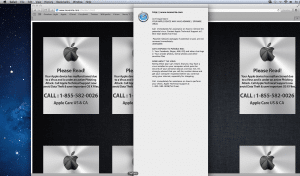
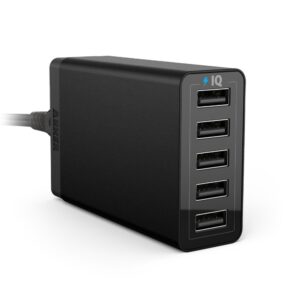 Multiport USB Chargers
Multiport USB Chargers